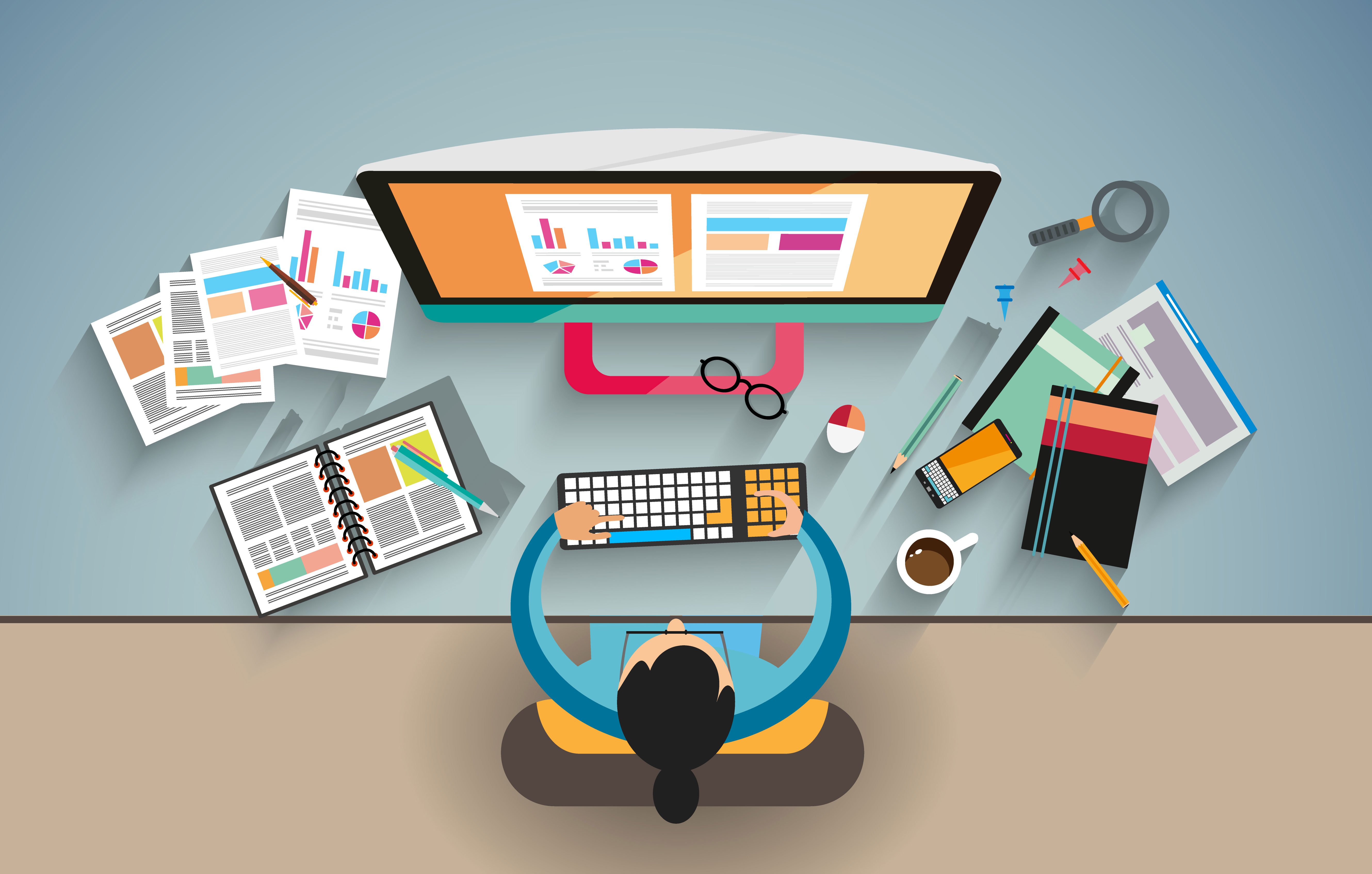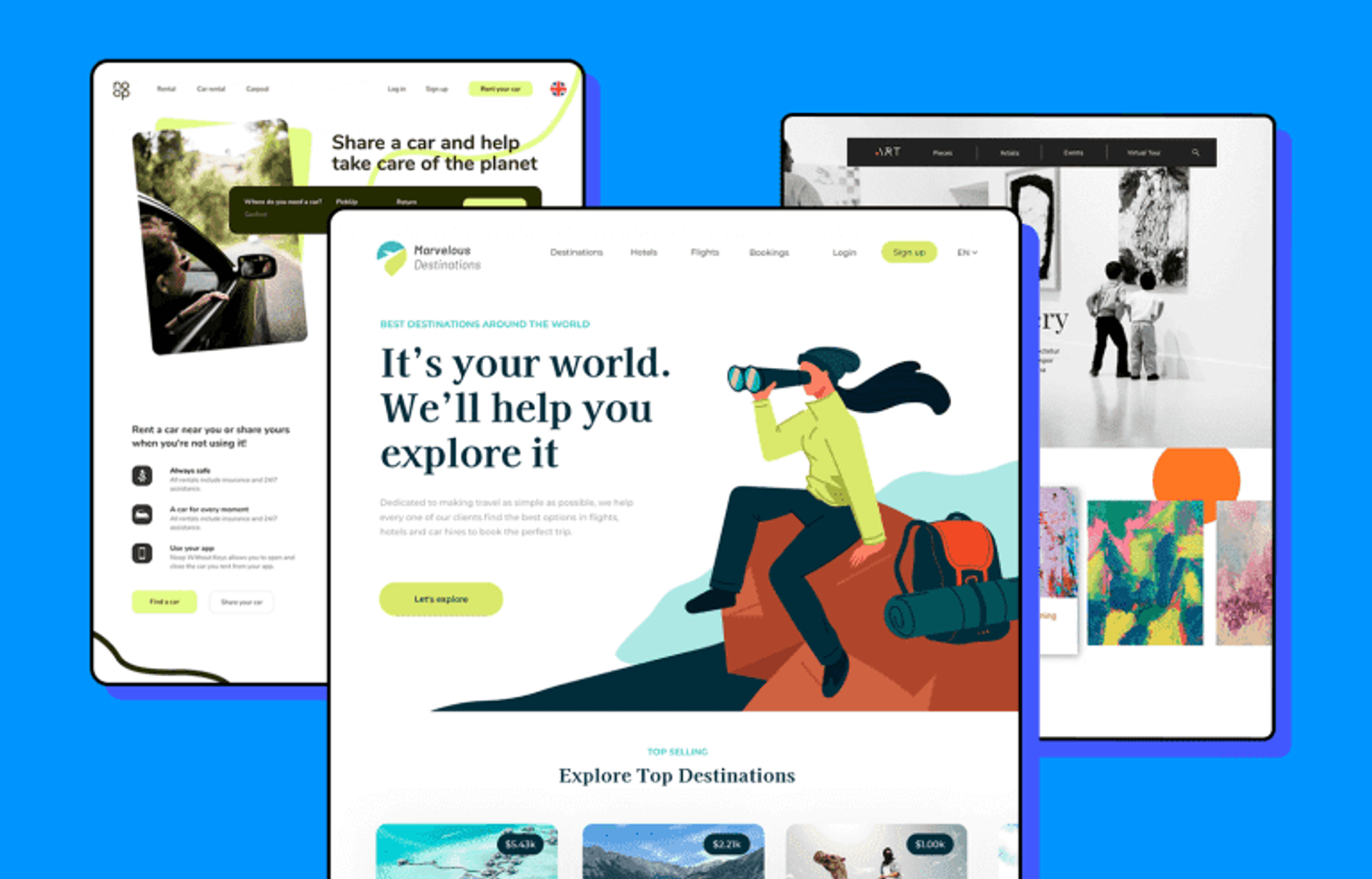Aligned Position Web Design: Delivering High-Quality, User-Friendly Web Designs for Every Industry
Aligned Position Web Design: Delivering High-Quality, User-Friendly Web Designs for Every Industry
Blog Article
The Most Effective Kinds Of Website Design to Enhance Individual Experience and Interaction
In the ever-evolving landscape of electronic interaction, the performance of website design significantly influences user experience and interaction. Different design approaches, such as minimalist, responsive, and interactive layouts, each offer one-of-a-kind benefits that can satisfy diverse individual requirements. Understanding which kinds of Web layout best offer these purposes can be essential for companies intending to enhance customer contentment and retention. The inquiry stays: which design elements really resonate with individuals and foster significant involvement? The exploration of these concepts reveals essential insights that may redefine your method to Web design.
Minimal Web Design
As digital landscapes end up being significantly messy, minimal Web style has become an effective method to boosting user experience. This design philosophy focuses on simplicity, concentrating on crucial components while removing unnecessary diversions. By using ample white room, straightforward navigating, and a limited shade combination, minimalist style promotes clarity and routes user interest to crucial web content.
The core concept of minimalist Web style is to produce a seamless communication for individuals. By minimizing cognitive tons, users can quickly realize details without feeling bewildered. This direct technique not just improves functionality however also encourages engagement, as site visitors are most likely to explore a site that is visually attractive and simple to browse.
Furthermore, minimal style often stresses typography and images, making use of these components strategically to communicate messages efficiently. This concentrate on crucial parts can enhance brand identity and produce a memorable individual experience. Fundamentally, minimalist website design is not just a fad; it is a thoughtful methodology that identifies the relevance of user-centered style. By removing peripheral components, designers can create a much more engaging, effective, and satisfying Web experience for all customers.
Receptive Website Design
In today's varied digital setting, responsive Web style has actually ended up being necessary for producing a seamless customer experience across a wide range of tools. As users accessibility websites on smartphones, desktop computers, tablets, and laptops, the capacity of a web site to adjust its design and material to various display dimensions and resolutions is essential.
Responsive website design employs flexible grids, images, and CSS media queries to guarantee that Web material exists ideally, despite the gadget made use of. This strategy not just improves the visual charm of a website but likewise substantially boosts usability. Individuals are more most likely to involve with a site that supplies a consistent experience, as it removes the stress of needing to zoom in or scroll excessively.
Furthermore, online search engine, including Google, prioritize mobile-friendly internet sites in search rankings. By taking on receptive style, services can boost their exposure and reach a wider target market. This technique additionally streamlines site upkeep, as a single version of the site can satisfy all gadgets, decreasing the demand for numerous versions. In recap, responsive website design is a fundamental technique that improves user experience, engagement, and overall contentment.
Interactive Website Design
Receptive website design prepares for boosting customer experience, however interactive Web style takes this an action better by involving users in a much more dynamic means - Aligned Position Web Design. By including elements such as animations, clickable models, and real-time comments, interactive website design astounds customers, attracting them into a richer browsing experience
This approach not only promotes engagement yet additionally encourages customers to explore content proactively rather than passively eating it. Strategies such as gamification, where individuals make incentives for completing tasks, can significantly improve the time invested in a website and enhance general complete satisfaction. Furthermore, interactive browse around this web-site features can streamline complicated info, making it extra pleasurable and digestible.

Including interactive layout components can additionally cause greater conversion rates, as individuals are more probable to involve with a website that actively entails them. Aligned Position Web Design. Inevitably, interactive Web design changes individual experiences into memorable journeys, making certain that visitors return time and once again
Flat Layout
Defined by its minimalistic method, flat design emphasizes simpleness and functionality, removing unneeded elements and concentrating on crucial functions. This layout ideology focuses on usability, guaranteeing that customers can navigate user interfaces with simplicity and performance. By employing a clean visual, flat style removes the mess usually located in a lot more elaborate styles, thus boosting user concentrate on content and functionality.
The trademark of level layout hinges on its use of vibrant colors, simple typography, and geometric forms. These aspects add to an aesthetically attractive interface that is both friendly and modern. Additionally, flat design promotes a feeling of clarity, permitting individuals to determine important activities and info without disturbance.
Furthermore, flat design is specifically effective in responsive Web design, as its simpleness translates well across numerous gadgets and display sizes. By focusing on vital features, level design not just satisfies user requirements yet also urges seamless communication, making it an essential component of efficient Web design techniques.
Flexible Web Design
Flexible Web layout personalizes the individual experience by producing several fixed designs tailored to different screen dimensions and gadgets. Unlike responsive style, which fluidly adjusts a single format, adaptive layout uses distinctive designs for specific breakpoints, ensuring optimal presentation on different systems. This technique allows designers to focus on the one-of-a-kind features of each gadget, improving use by providing exactly what individuals require based upon their context.
Among the key advantages of adaptive Web style is its capability to enhance tons times and efficiency. By serving tailored content and pictures that fit the individual's device, web sites can decrease data use and enhance loading speeds. This is particularly advantageous for individuals with slower connections or minimal data plans.

Furthermore, adaptive style assists in a much more controlled and regular branding experience. Considering that designers produce multiple layouts, they Clicking Here can make sure that the visual elements line up with the brand's identification throughout different systems - Aligned Position Web Design. This causes a cohesive customer experience, boosting engagement and promoting customer retention
Final Thought
Minimal layout fosters quality and emphasis, while receptive style ensures versatility throughout numerous tools, advertising accessibility. Collectively, these style comes close to add to the creation of straightforward atmospheres that not only boost satisfaction yet also drive higher conversion prices, highlighting their critical relevance in contemporary Web design methods.

Minimal style cultivates clarity and emphasis, while responsive design ensures versatility throughout numerous tools, promoting access. Jointly, these layout approaches add to the creation of user-friendly settings that not just improve contentment however additionally drive greater conversion rates, emphasizing their important relevance in contemporary Web style techniques.
Report this page